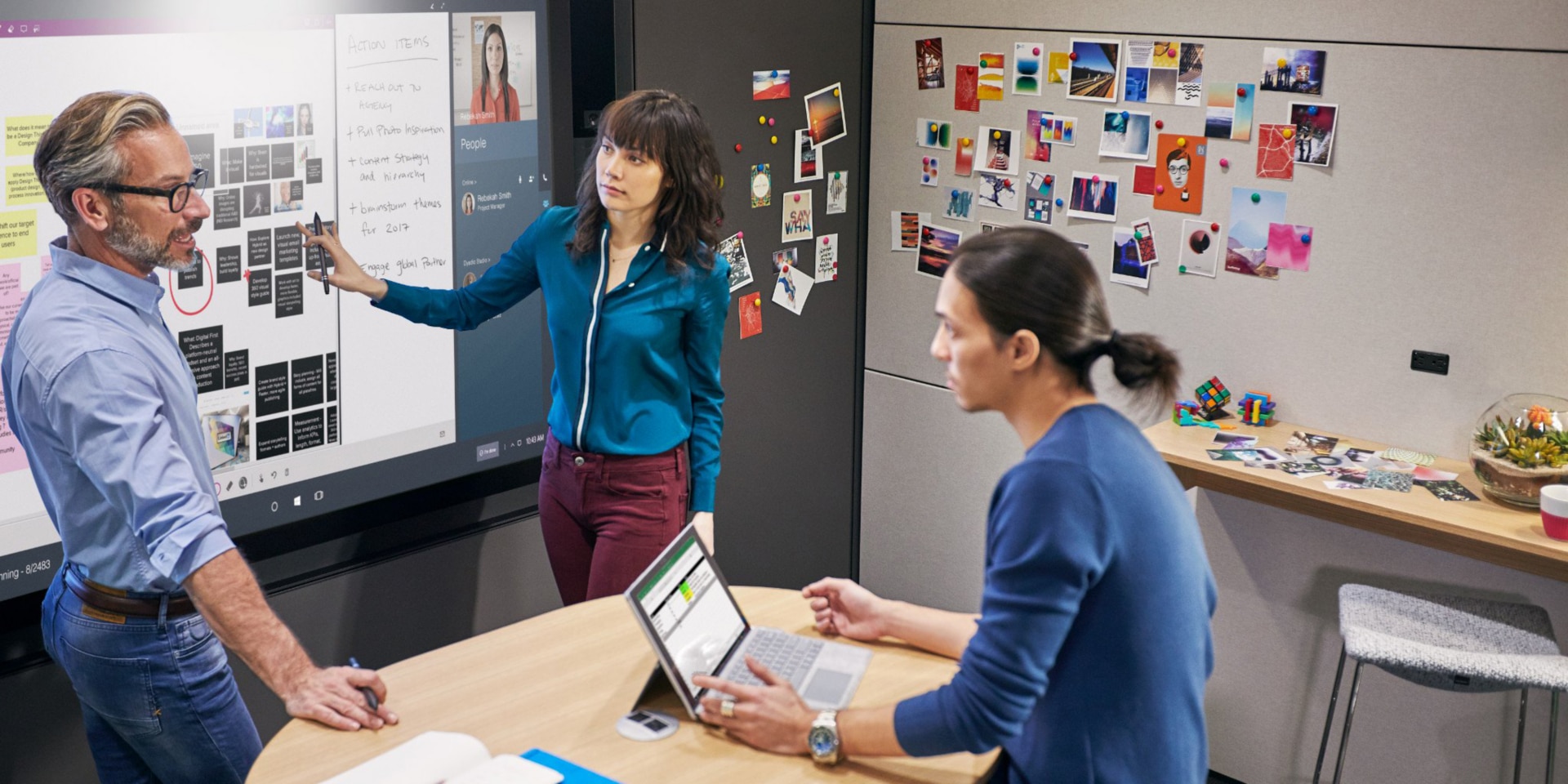May 07, 2018
Maximizing the Potential of Your Microsoft Surface Hub — Part 3
The Surface Hub offers definitive value to organizations, as long as they know how to implement it.

In my first post on the Surface Hub, I focused on potential new use cases for this hybrid devices. Then my second blog post in this series took a deeper dive into the Surface Hub’s features and how it compared to the competition. Now, I’m finally getting around to the question of whether this product is worth consideration — and the answer is yes.
Though it is somewhat more expensive than the other competing boards, I think for many businesses it will be worth it compared to buying all the components separately. Especially if your users use Skype for Business today or even just Office 365, they should find the experience to be great. Tying everything together on a single board has huge benefits and if you support your users and help them to take the time to find those “Aha!” moments, I think you will find that it becomes irreplaceable.
Will this be a good fit for every one of your conference rooms? I don’t know that it will. While you can extend the screen to other monitors and projectors and outfit the board with a Polycom (or should I say Plantronics?) Eagle Eye camera to extend the range, you need to think about what you are trying to solve for. The 55″ Surface Hub is great for huddle rooms that seat six to eight people, while the 84” is aimed more at the 25 to 30 person mark. For room planning, think about where you just need to present and have videoconferencing versus the rooms where you have more interactive dialog and brainstorming.
One of the things that I found as I explored the different options was that I was trying to force myself to use the Hub in ways that didn’t really make sense. As I reviewed and edited a Word document with some of my peers, I wanted to get up and see how it would work if I did it from the screen. It didn’t take me very long before I abandoned the adventure; while scrolling, pointing, drawing, etc. was great, actually editing and typing was immensely easier from my good old laptop keyboard and touchpad.
I can see where just reviewing and not editing a document might make sense, but you will have to play with it yourself to see how useful it is in your situation. My main point here is that it doesn’t have to fit every use case as long as you are getting value out of the tool. Though not a perfect analogy, not everyone will use the spoon in their Swiss Army knife at every meal.
How Do I Get the Most Out of It?
Looking through everything that we have discussed so far, I hope you have realized that this is not a simple answer. There are definitely some simple things you can focus on to make sure that you are getting value out of the Surface Hub, but to get the most and really hit the “I can’t live without it” mark, you need some time to explore and play. This should ideally be done with key team members from your different lines of business: Marketing will probably not use it the same way that your HR or IT teams would.
A good way of doing this is to have a champions program where representatives from each group are given training, time and extra assistance to learn the ins and outs of the tool and find those hidden gems that work for that group of users. Good candidates for your champions group should be naturally curious and open to new ideas and ways to work. You should encourage your champions from the different groups to engage with one another to share lessons learned and collaborate on ideas.
Get the word out and build excitement so people want to get in and get their hands on it: The Hub can be intimidating to a first-time user, but after one or two sessions, they should be much more comfortable exploring it. You can also get a good business analyst/Surface Hub adoption expert to help you establish use cases and build and deliver training material, best practice communications, marketing plans, etc. (those are things CDW can help you with).
I highly recommend against just hanging it on the wall in a conference room and expecting users to figure it out. While some quick reference guides can be used to focus people in on a few key features like calling and whiteboard, you will miss out on the early excitement and the opportunity to wow them by helping them understand the use cases that will make their work lives better and more productive: You only get one chance to give a first impression.
Final Thoughts
I very much enjoy interacting with the Surface Hub today, but I think with the integration of Microsoft Teams natively as well as some of the features that I have seen speculated about with the v.2 that is due out soon, it will become even more productive of an experience.
Some things that I expect to see soon are OCR in the whiteboard and Cortana integration. I would love to see something like the proximity control of the Cisco Spark Board where a user in the room can place a call as themselves from the client on their PC or mobile, but we’ll have to see how much Microsoft is watching the other products out there and trying to simplify the user experience.
Keep your eyes on this one. It was the first of its kind and continues to expand what is possible.
Learn more about CDW’s partnership with Microsoft around delivering digital workspace solutions.
